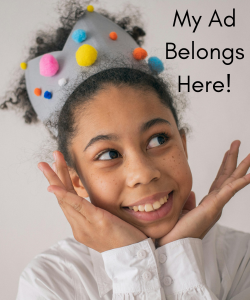By Khalid Williams
bon vi·vant
/bän vē vänt/
(Bawn vee Vawn…just like Jawn if you know anybody from Philly.)
A bon vivant is a person who enjoys the good things in life, especially when it comes to food and drink. The term originated from French and translates to “good liver” or “one who lives well.”
Americans became acquainted with the term when the first cocktail book of record was released by Jerry Thomas, and so named “The Bon Vivant’s Companion”.
Bon vivants have a great love for culture, music, theater, fashion, and all forms of entertainment that enrich their lives. In America, if truth be told, each one of these pursuits did not become distinctly American until black folks put our hands, hearts and souls into the mix. During the first golden age of cocktails (1860-1933), the skill and style of black mixologists was celebrated, with these men being given validation beyond the “ordinary” black citizen. In our first article, we detailed some of those achievements and how they still affect thoughtful drinking and sophisticated sipping to this day.
The Forgotten Legacy of Black Mixologists
Unfortunately, just like it happens with trends in music, fashion, and food, our place at the cocktail table has been obscured over time, reduced to stereotypes surrounding Hennessy and rosé. Even sadder, some of us succumbed to this myth, leading our collective drinking habits down the path of microwave culture—favoring artificially produced flavors, overly sweet pre-mixed drinks, and hangover-inducing concoctions specifically marketed to Black consumers, such as Boone’s Farm, MD 20/20, and Thunderbird. Ironically, this decline in cocktail craftsmanship wasn’t limited to our community. Beginning in the mid-sixties and for the next 30 or so years, the art of cocktail-making lost its significance.
A New Day
The second golden age of cocktails (1999-present) has been made more abundant specifically by the way black bartenders and cocktail lovers show up with their culture as their main ingredient. We are now named and claimed as some of the brightest stars in the boozy sky.
The goal of this column is to utilize the black faces, spaces and places that have been at the forefront of the Great Cocktail Revival and give them their flowers, educational journey into the world of adult beverages, whether they are alcoholic or non-alcoholic. This platform offers us the opportunity to uncover knowledge that was once obscured, either due to ignorance or ill intent.
Like many aspects of our lives, a re-education is essential to help us unlearn the burdens imposed by those who lack understanding and empathy. This is a safe space where you can ask questions, embrace your mistakes, and ultimately enhance your enjoyment of cocktails, wine, beer, or mocktails in your future experiences.
This, friends, is the first installment of The Black Bon Vivant’s Companion.
Today’s Objective-to confront and debunk the two big myths about black drinking culture.
Myth 1: Black people only drink Hennessy. Henny and Coke is the African American beverage calling card.
This trope serves as further evidence of the significant value we contribute to America. Here’s why this mindset persists: While it’s true that we enjoy our share of “yak,” cognac remains one of the world’s most esteemed and prestigious beverages.
During the Vietnam conflict, which took place in a former French colony, a substantial number of deployed soldiers were young, Black, and economically disadvantaged. The bars overflowed with cognac due to low duties and import taxes. The combination of a high concentration of Black individuals defending America’s freedom, soldiers’ need for a drink to dull the trauma of war , and a financial incentive to sell French liquor resulted in a notable consumption of cognac within the Black community.
Basically, we drink cognac so all of ya’ll can be free. Tell somebody that the next time they try you with a joke about “1738” at the company Christmas party.
Boozy Knowledge
Cognac is more than just a type of spirit; it’s a specific region in France, nestled within the Champagne area (that’s right. Champagne is a place as well.) This is where the finest wine grapes are cultivated and harvested, either transformed into the world’s most renowned sparkling wine or distilled into the prestigious brandy we know as Cognac. The product is so intrinsically linked to its origin that it can only be produced within this designated area.
Brandy is any liquor made from fruit. Many people associate cognac with whiskey or bourbon, and while they share some similarities due to being aged in wood, their origins are completely different. Brandy is any liquor made from fruit. Many people associate cognac with whiskey or bourbon, and while they share some similarities due to being aged in wood, their origins are completely different.
Myth 2: Black People Only like Sweet Wine, and Sweet Wine is Low-Quality.
Generally speaking, the African American palate tends to gravitate towards bold flavors. With many of us having roots in the South and the Caribbean, we often appreciate vibrant, bold beverages that celebrate the beautiful, ripe notes of citrus, peaches, and pineapples. While there is a grain of truth in many stereotypes, my personal experience shows that this trope can lead bartenders and sommeliers to offer only the sweetest options to Black patrons. Consequently, some Black patrons may avoid ordering wine altogether or end up with choices they don’t enjoy, all to sidestep the stereotype. Moscato and Riesling are exquisite and esteemed wines, yet we limit our full enjoyment of them when constrained by the invisible barriers set by flavor gatekeepers.
The situation becomes even more troubling when it comes to quality. There exists a slippery slope that begins with the acknowledgment that many of us do enjoy fruit-forward flavors, compounded by the fact that access to wine has historically favored white males. Specifically, Black women are often unjustly labeled as having unrefined palates that only appreciate sweet wines. This misguided notion perpetuates the idea that sweet wines are of lower quality and are preferred by those who simply don’t know any better.
The belief that sweet wines lack quality is a clear indication of unconscious bias. Anyone promoting this perspective is, quite frankly, misinformed. Sparkling wine was sweet until the French wanted to sell it to the British who liked dry Cider. Riesling has infinite styles, and many of them are sweet, bold, and prized as some of the best wines in the world.
Boozy Knowledge
You can enjoy sweet wine if you want to, and you never have to do anything else. If you want to branch out, the idea that the palate needs to be “refined” should be replaced with the thought of palate “evolution”.
If you are a fan of Moscato, Riesling, or sangria any think you maybe don’t enjoy dry red wine but are curious, here is a guide to taste your way into loving red wine. (or not. its your choice, because its your drink. Do what you wanna do.) Trying wine in “flights” is the way to go.
The Wine Flight- Your Passport to Enjoyment
Think of a flight of stairs-it goes upwards. A flight of wine is a series of wines that increase in a particular quality, and in this case, dryness. Your first reaction to big, bold dry red wines might honestly be to gag or be repulsed. Guess what? THAT IS OKAY! One might even call it expected. If you have had your flavor choices determined by folks who don’t care to understand you, chances are your palate would benefit from wine flights and the evolution of flavor. The point of this exercise is to begin with something that you enjoy, and push the boundaries toward flavors that are new to you.
Flight One: White Wines
Riesling (reez ling) from Germany
Sauvignon (saw vee yon) Blanc (bLAHnk) from New Zealand
Pinot Grigio (pee no gree joe) from Italy.
Flight Two: Red Wines
Lambrusco (lam brew sko) from ItalyZinfandel from California (red, not white.)
Shiraz (she rawz) from Australia
To review, you are now armed with some context around the labels that have held our bon vivant journey back, and have a blueprint to explore beverages without bias. As we embark on this journey of drinking and living while black, I want to hear your adult beverage experiences, good or bad. Comment on my latest cocktail post and get a conversation going about where you are in your journey as a #blackbonvivant
A little fun fact to tie this all together
Every distilled spirit starts as a beer or a wine. To make alcohol, a substance must first be fermented. If the substance is fruit, it will be fermented into a wine, and distilled into a brandy. If the original substance is a grain (think barley, corn, wheat), it will be fermented into beer.
The cognac we discussed started off as a wine, and before that a grape.
The bourbon that we briefly discussed started off as a beer, and before that it was a grain.
Educational Resource
J’nai Williams- learn about cocktails in a safe digital space from a black female creator that leads with and deploys kind candor to dispel myths about black drinking.





